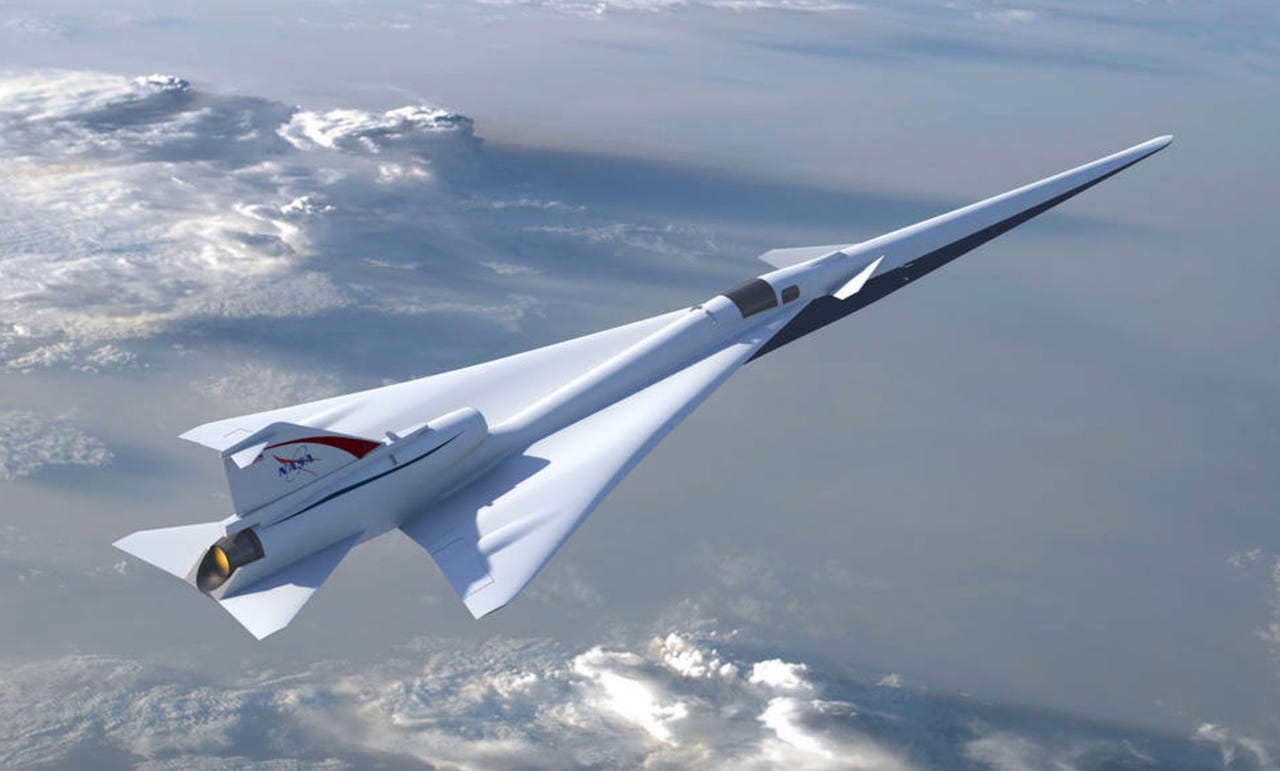Begone, sonic boom: NASA takes on the screech of supersonic travel


Featured
NASA is keen to see next-generation transport technologies revitalized in the US but in order to do so, regulators must be kept happy with a reduction in the cacophony associated with supersonic travel.
This week, the US space agency revealed that research into a design concept called Quiet Supersonic Transport (QueSST) has shown it may be possible to reduce the noise of supersonic craft.
QueSST is the initial design stage of NASA's planned Low Boom Flight Demonstration (LBFD) experimental airplane, otherwise known as an X-plane, which is a project the agency hopes will prompt the creation of a quiet, financially viable, and environmentally-friendly supersonic plane with low emissions.
Commercial supersonic transport is currently not allowed in the US and UK, and without regulatory permission, designing such transport -- despite the lure of much-reduced travel time -- is a non-starter.
However, should the disruption and noise of such transport be improved, regulators may have a change of heart -- especially as the demand for air travel for both business and leisure continues to climb.
Peter Coen, NASA's commercial supersonic technology project manager, says that NASA has been working on supersonic technology for decades which takes the "boom out of boom."
The X-plane research conducted so far suggests that craft can fly at supersonic speeds, but will create a soft "thump" rather than a sonic boom which can annoy those on the ground, contribute to noise pollution and raise the ire of government regulators.
"The idea is to design the plane so that the shockwaves produced in supersonic flight are arranged in such a way that you don't have a boom, you have a general, gradual pressure rise which produces a quiet sound," Coen says.
The next phase is to take X-plane technologies and test them in flight and to do so, NASA is building a small supersonic craft which can still "represent the boom of a larger airplane."
"The idea is to prove the technology [..] and ultimately to prove the sound is acceptable to people on the ground," the NASA executive explained.
While the agency is keen to acquire atmospheric data in future tests, much of the research will be conducted on the surface, where crews will hand out surveys to ascertain just how annoying the sounds of the test craft are to the general public.
See also: NASA proposes artificial magnetic field to make Mars a second home
NASA hopes that eventually, people will not notice the sound at all, which is what may be required for regulatory changes in the US and the reinvigoration of commercial supersonic travel.
Over the next few months, NASA will focus on working with Lockheed Martin to finalize the QueSST design, and will also conduct a static inlet performance test and a low-speed wind tunnel test at NASA's Langley Research Center in Hampton, Virginia.